| FEATURED
by the VOMB Squad
All in all, 2021 was another awful year with an awful pandemic and a bunch of awful deniers making awful declarations and calling it patriotism and religion. But at least we had our books.
“Books are a uniquely portable magic,” according to Steven King.
The pandemic gave many of us a lot more time to wade through our libraries. And some of us got around to reading the books we thought we’d never get to.
As is our annual end-of-the-year tradition, we asked a handful of Voices of Monterey Bay readers and friends for quick reviews of the books that sustained them in 2021. Taking a page from Bertrand Russell, we asked them to share their thoughts. (It was Russell who said there are two motives for reading a book: “One, that you may enjoy it; the other, that you can boast about it.”)
What follows are some book boastings, and there’s not an awful one in the bunch:
Enlarge
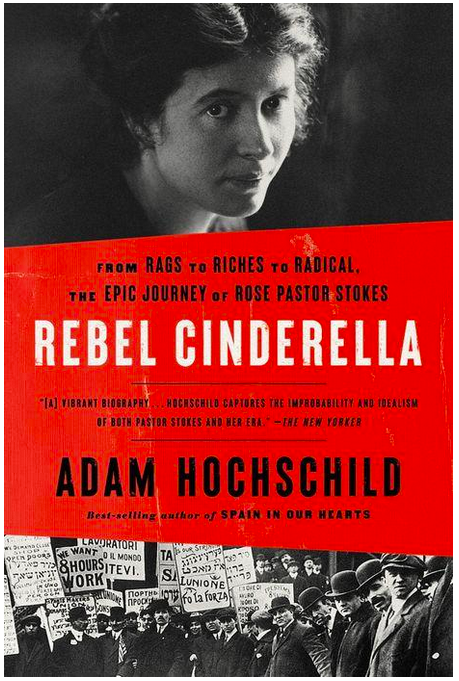
Rebel Cinderella
Adam Hochschild
Houghton, Mifflin, Harcourt 2020
‘Rebel Cinderella” is a historical narrative about the rags-to-riches story of immigrant, feminist, socialist and union activist Rose Pastor Stokes.
This early 20th century story shares the riveting tale of a Jewish-Russian immigrant who worked as a child laborer in cigar factories from the age of 11 while emerging as a journalist, socialist, and celebrity activist after marrying the millionaire scion Graham Stokes, who shared some, but not all, of her radicalism.
Hochschild’s captivating history draws on journals, letters and FBI surveillance files to frame the story of Rose, who was friends with Emma Goldman, Big Bill Haywood, Margaret Sanger, Clarence Darrow and John Reed.
The book details specific labor and political struggles, mostly centered in New York City, including the Triangle Shirt Company fire where 146 immigrant workers died in a ninth- floor inferno. In response to this preventable tragedy, Rose organized a demonstration of over 120,000 who marched on New York’s Fifth Avenue.
The story also follows the ups and downs in the Stokes’ marriage and the trials and tribulations of a most fascinating life and historical period.
In the spirit of full disclosure, I confess my bias in favor of Adam Hochschild’s compelling works, including “Half the Way Home,” “King Leopold’s Ghost,” “To End All Wars” and “Spain in Our Hearts.” Read any one of his books and you’ll be hooked. (Note: Hochschild helped finance the start of Mother Jones magazine.)
— California Sen. Bill Monning (Ret.)
Enlarge
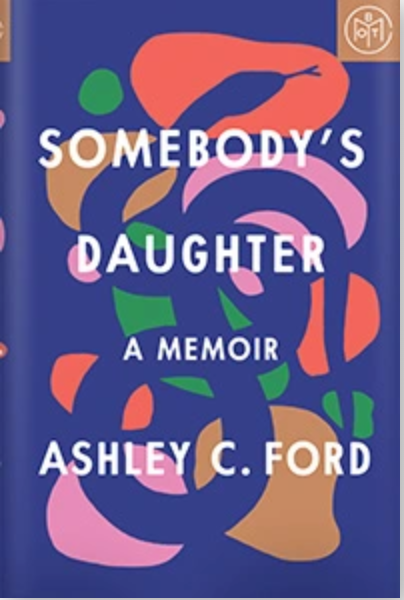
Somebody’s Daughter: A Memoir
Ashley Ford
Flatiron Books: An Oprah Book 2021
Published just this year, Ashley Ford’s memoir “Somebody’s Daughter” explores truths that we all know: familial love is complicated and forgiveness is complicated.
Even if these truths are familiar themes for those of us who love to read memoirs, Ford’s sharing of her experiences and her reflections on those experiences never stop feeling fresh and surprising. In part, this has to do with the specifics of her subject matter. Ford’s father was incarcerated for much of Ford’s childhood and young adulthood. While for several years she does not know why, eventually it is revealed to her that he is incarcerated for having raped two women. Ford learns this around the time that she herself endures a rape.
This powerful convergence of events in her early adolescence – her own assault and learning the truth of the crimes committed by her father – turns her life upside down. Yet through it all Ford loves her father and longs for him. She writes, “All my life, my father represented love to me. Deep, enduring, irrevocable love…” Ford’s love for her father, and her father’s love for her, shine all through the memoir even during dark and difficult moments.
In recent years, several books have been published by those who themselves are or have been incarcerated, but we seldom get perspectives like these – the perspectives of daughters, sons, spouses and other family members left behind “on the outside” while their loved ones are incarcerated. Mainstream narratives dehumanize those who are incarcerated, as if the social death conferred upon them by incarceration is a totalizing one. But no. For incarcerated people and those who love them, life continues after incarceration — familial bonds are tested, so many things are tested. Ford’s book is not a fairy tale. There is no happily ever after and enduring love does not mean easy love. Somebody’s Daughter brings this reality to life, and it is impossible for the reader not to feel it — in all its pain and sad beauty.
– Maria Joaquina Villaseñor
Enlarge
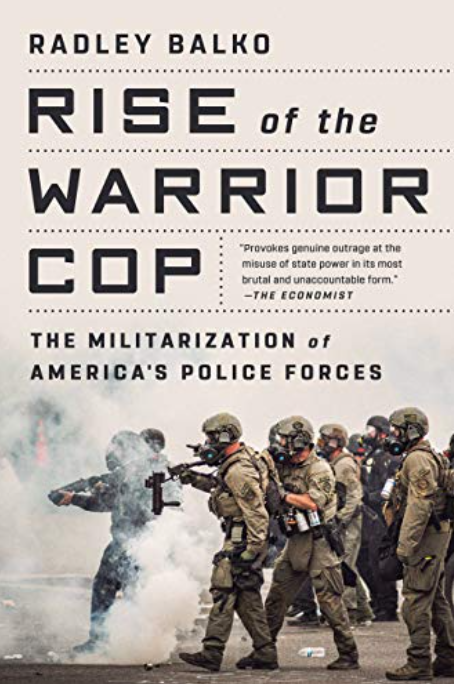
Rise of the Warrior Cop: The Militarization of America’s Police Forces
Radley Balko
Perseus Book Group 2013
At a time when many police departments are under unprecedented scrutiny, and new pressures to act less like occupying armies and more like friendly protectors, Radley Balko’s “Rise of the Warrior Cop” should become required reading for reformers and those in need of reform.
Some, mostly cops, have called the book overwrought and there is a bit of truth to that, but only a little. It is a chronicle of how police departments have expanded their missions exponentially while becoming less and less accountable to the public they are sworn to protect. There aren’t a lot of pats on the back for the boys, and girls, in blue. It is an indictment of police agencies that have become protectors of the establishment, enforcers of outdated codes of conduct and, too often, fortresses of white supremacy.
Balko notes that organized local police forces weren’t a reality during the birth of this nation. He suggests that if the framers of the Constitution could have imagined what police agencies have become, they would have drafted a much longer Bill of Rights. Unreasonable search and seizure? Who was it — Richard Nixon? — who decided that having SWAT teams bust down doors was OK whenever there was suspicion of drugs on the premises?
Who polices the police? Nobody, mostly. And on the relatively rare occasions that they are policed, when they are fired or even more rarely prosecuted, much of the process is hidden from the public. Just look at Monterey County, where the current sheriff and some of his staffers have violated an assortment of rules and regulations but the details are cloaked by stamps of official privilege.
Here’s what the American Conservative publication said: The book “diagnoses a grave threat to our Constitutional rights. If Americans still possess the wisdom of our founders, we will heed Balko’s warning and turn back our drift toward a police state.”
“Rise of the Warrior Cop” should be read by those in power, those who fear the power and those who want to see it redirected.
— Royal Calkins
Enlarge
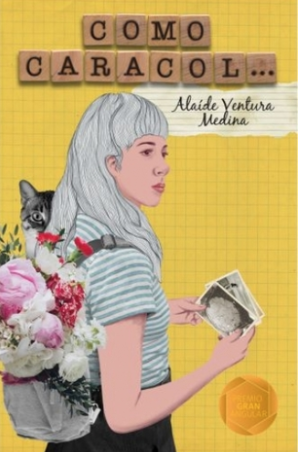
Como caracol…
Alaíde Ventura Medina
México: Ediciones SM, 2018
Ya tenía días, o quizá semanas, que mi papá empezaba a olvidar cosas. No recordaba que había comido, a qué hora había desayunado. Las historias que contaba comenzaron a ser una mezcla, le quitaba, le ponía situaciones que no iban. Cuando me preguntó por uno de sus hijos y no recordó el nombre entonces tanto él como yo nos asustamos. El doctor nos dio su diagnóstico.
Como caracol… es un libro de Alaíde Ventura Medina (Xalapa, Veracruz, 1985). Antropóloga, escritora y editora mexicana. La historia de esta novela comienza cuando Julieta, una joven de 16 años, recibe una libreta con frases de libros y de autores, regalo de Mariana, su abuela materna, de quien sólo tiene recuerdos vagos.
En la primera de las dos partes de esta novela, se narra la forma en que se construye la buena relación entre nieta y abuela. A través de Julieta, conocemos a Mariana, una mujer independiente e inteligente
En la segunda parte, se presenta el tema de la novela. Mariana, arqueóloga de profesión, es diagnosticada con Alzheimer. La escritora presenta los hechos en presente, sin recurrir a saltarse los años. Simplemente presenta el proceso del olvido de Mariana en forma acelerada:
“Era la quinta vez que repetía esa historia de principio a fin… No había nada que hacer, además de mirar. Mirar y estar juntas, esperar a que todo acabara. En el cine, tarde o temprano, prenden la luz y nos vamos a casa, así tendría que ser en la vida real también…”
Con sencillez, la autora describe las etapas de la enfermedad: “Básicamente, que a Mariana se le iban a seguir olvidando las cosas, pero no de una manera ordenada… En el proceso, todos los colores se mezclarían, se haría un batidillo… poco a poco, empezarían a desaparecer los tonos, hasta quedar sólo el blanco… Los recuerdos se iban borrando de adelante para atrás, primero hoy, luego ayer y al final el siglo pasado.”
Esta obra, catalogada dentro de la literatura juvenil, es un buen comienzo para entender, de forma sencilla, la enfermedad del Alzheimer y comprender más al familiar que se encuentre en esta situación. Como dice Alaíde Ventura Medina:
“No hay verdad o mentira donde no hay pensamiento racional. Lo único que hay son recuerdos mal acomodados y mucha emoción: euforia, miedo…”
— Josefina Cabrera-Moreno
Enlarge
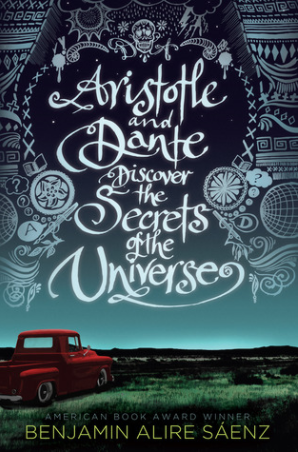
Aristotle and Dante Discover the Secrets of the Universe by Bejamin Alire Sáenz
Aristotle and Dante Discover the Secrets of the Universe
Bejamin Alire Sáenz
Simon & Schuster, 2012
As the year winds to an end, it is a pleasure to look back on the books which offered us comfort throughout all these long months. For me, a book that stood apart from the rest was, “Aristotle and Dante Discover the Secrets of the Universe,” by Benjamin Alire Sáenz.
“Aristotle and Dante” is set in 1980s El Paso, Texas, concerning the lives of two young Mexican-American boys. I was lucky to read this book at the perfect time. I was 16, the same age the main characters were for the majority of the book. Within the book, I found countless similar insecurities and fears I held, being a young person on the precipice of adulthood and always in a transitional period of becoming someone else.
Aristotle (better known as Ari) is an introvert who feels apart from everyone in his life. His siblings are much older than him, and his father is a war-torn Vietnam War veteran who hardly speaks to him at the beginning of the book. It’s not until he meets Dante that Ari starts opening up. And Dante has his own problems.
Although he’s more extroverted and confident, with two loving and quirky parents who dote on him endlessly, he feels insecure in his identity as a Mexican-American. Never before had I read a book that spoke to my experiences as a Mexican-American so astutely. Being a child of immigrants means constant identity crises, being caught between two cultures, and never really knowing which you fit into.
Dante constantly struggles with being perceived as “not Mexican enough” because he doesn’t speak Spanish, and he’s paler than most. But as the book progresses, we see both characters grow and settle into themselves. Dante finds a sense of security in who he is. Ari learns that he doesn’t need to hide from anyone, not even himself. By the end of the book, they’ve both grown into the people they needed to be. They don’t discover all the secrets in the universe, but they discover the most important lesson of all: how to love.
— Angela Rodríguez
Enlarge
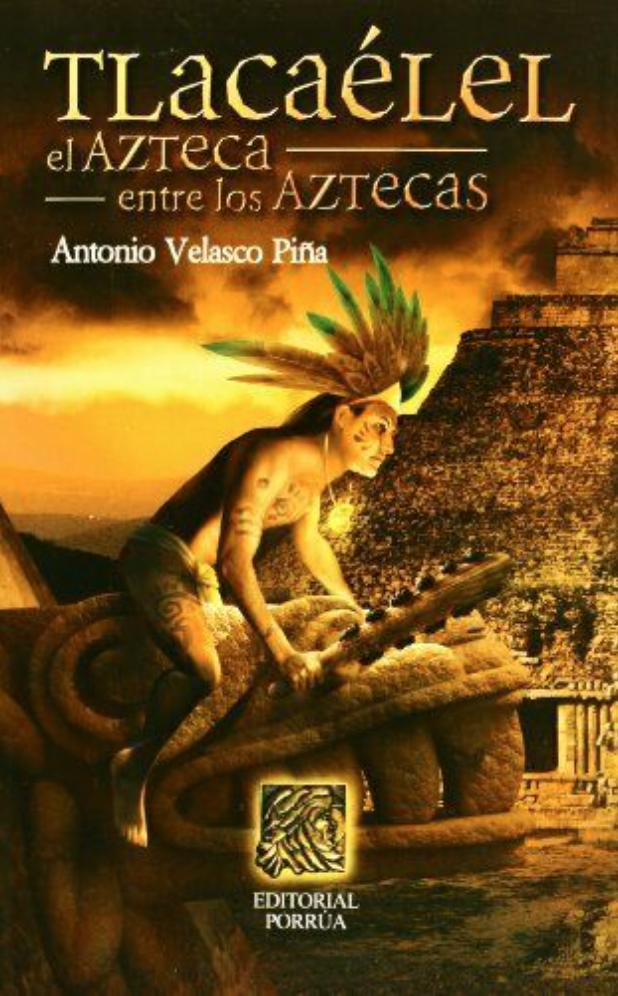
TLACAELEL: El Azteca entre los Aztecas
Antonio Velasco Piña
Editorial Jus, 1979
Si cuando oyes hablar de los aztecas, lo primero que viene a tu mente son los sacrificios humanos, entonces necesitas leer Tlacaélel, una novela histórica escrita por Antonio Velasco Piña. Cuando la leí por primera vez en mi juventud mi ejemplar era la decimoquinta edición apenas en 1979. En aquella ocasión lo que más me llamó la atención fue el papel dominante de Tlacaélel, quien como sumo sacerdote encargado de portar el Emblema Sagrado de Quetzalcóatl era quien decidía la sucesión de los emperadores aztecas y por lo tanto tenía una influencia muy importante en el gobierno del emperador en turno.
Esta revelación contrastaba con la historia que había aprendido en la escuela primaria, en la cual los personajes sobresalientes siempre fueron los emperadores de la Gran Tenochtitlan, como Moctezuma o Axayácatl, o los gobernadores de las colonias como el renombrado Nezahualcóyotl. Pero de Tlacaélel, ni sus luces.
El lector comienza a comprender el papel de Tlacaélel como estratega militar (muy al estilo del Arte de la Guerra de Tzun Tzu) cuando como el recién nombrado sumo sacerdote decide regresar a Tenochtitlan sin ser visto “para comprobar la efectividad de las defensas que la protegían.” Y después de organizar al pueblo para apoyar a su ejército, Tlacaélel decide sumar a sus aliados de Texcoco comandados por Nezahualcóyotl. Juntos bajo el mando de Moctezuma lograron vencer al ejército tecpaneca de Azcapotzalco al mando de Maxtla.
Aunque las conquistas de los aztecas continuarían hasta que el reino de los tarascos de Michoacán les pusiera un alto, fue la expedición a un lugar muy cercano a la legendaria Aztlán, lo que permite mirar a Tlacaélel su papel como Azteca entre los Aztecas desde una perspectiva completamente diferente pero complementaria de la que se ha expuesto hasta el momento. Más tarde una visita a las regiones Mayas permitiría a Tlacaélel consolidar su visión espiritual del Imperio Azteca, la cual al fin pude apreciar después de una segunda lectura de esta novela apenas la semana pasada.
Queda al lector revisar el fragmento final de la novela en el cual Tlacaélel juega su último as bajo la manga. Quizás entonces se entenderá porqué su búsqueda del conocimiento emanado de las estrellas y su conexión con el destino de la humanidad fue más importante para él que ocupar el codiciado cargo de Emperador Azteca.
— Luis Arreguín
Enlarge
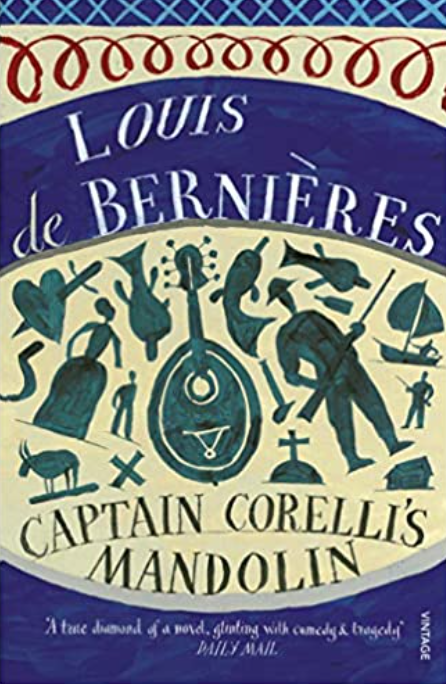
Corelli’s Mandolin
Louis De Bernieres
Vintage Books, 1994
I read a lot of 20th and 21st century history, but not a lot of fiction. Months back I dipped into a long World War II-era novel published in 1994 that I’d rescued from a discard bin and had almost forgotten I possessed.
It was love. And that is what the novel, “Corelli’s Mandolin,” is really about. Love of life, love of lovers, love of knowledge, love of art, comradely love, unrequited love, frustrated love, and most of all, love amid that most unlovely human circumstance — love during war. I loved the book.
Set on a small Greek island during successive occupations by Italian and German military forces, the novel contains a cast of unforgettable characters whose lives are upended by all the stupidity, cowardice, cruelty and evil that war brings.
With the earthy vitality of “Zorba” and a black humor that excels the antiwar classic “Catch-22,” the novel literally made me cry, at different beautifully written scenes, with laughter, anguish and horror. Simultaneously, I hurried toward the end but dreaded knowing this captivating tale would be over.
Later I learned “Corelli’s Mandolin” pissed off a lot of people, especially when a big film company came to the island to shoot a 2001 movie starring Nicolas Cage and Penelope Cruz.
Those who’d actually lived through the events complained the British author, Louis De Bernieres, portrayed villagers as buffoons, Italian soldiers as idiots and Greek partisans as communist-led marauders no different than Nazis and Fascists.
The filmmakers avoided the political controversies — which figure deeply even among the novel’s villagers — by stripping various characters and focusing on the bittersweet love story at the book’s core. Makes me never want to see the movie.
De Bernieres acknowledged overlooking gaps in historical research and taking poetic liberties, as all novelists do. But for me, any novel about good, everyday people caught in the maelstrom of a war created by madmen should piss people off. And make them cry with rage.
— Larry Parsons
Enlarge
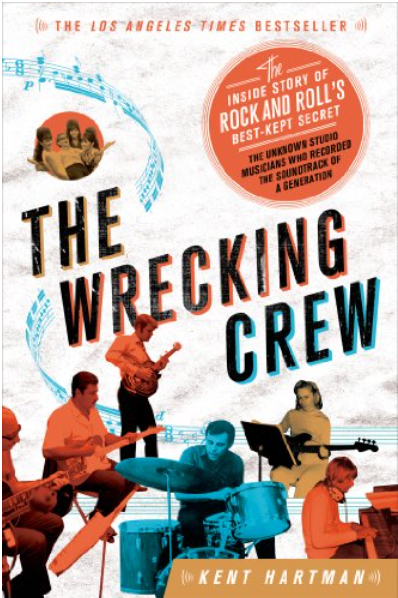
The Wrecking Crew: The Inside Story of Rock and Roll’s Best Kept Secret by Kent Hartman
The Wrecking Crew: The Inside Story of Rock and Roll’s Best Kept Secret
Kent Hartman
St. Martin’s Griffin, 2013
In the mid 1960s when Dean Martin was in the studio recording “Houston,” drummer Hal Blaine felt the song was missing something. Blaine had an idea to overdub some more percussion. He grabbed a glass ashtray, dumped the cigarette butts in a trash can and as playback began, proceeded to strike the ashtray with a wooden drumstick providing a sound like an anvil being struck. Blaine knew what he was doing. After all he had worked with Brian Wilson and The Beach Boys, The Byrds, The Mamas and Papas, The Ronettes and others. Blaine’s stick work made him one of the most sought—after drummers. He was part of a group of high demand session musicians known as “The Wrecking Crew.”
The Dean Martin session is one of many stories peppered throughout the 2012 book “The Wrecking Crew: The Inside Story of Rock and Roll’s Best Kept Secret,” by Kent Hartman. This book chronicles the famed Southern California session musicians and their glory years spanning 1962 to 1975. Some of the many artists the Wrecking Crew played for included: Sonny and Cher, The Righteous Brothers, The Partridge Family, The Monkees, Simon & Garfunkel, The Fifth Dimension and even Frank Sinatra.
This book, which I blazed through because it was so compelling, is a must read for anyone interested in the Los Angeles music scene during the ‘60s and early ‘70s. It provides the colorful background to the stories behind famous recording sessions for hit songs that the majority of the public might not know about.
Here are a few of them:
Carol Kaye, the only female member of Wrecking Crew, started out playing guitar then moved to electric bass. That’s her opening riff on “Wichita Lineman,” the hit by Glen Campbell, who himself was an early member of The Wrecking Crew until he forged a successful solo career.
Successful songwriter Jimmy Webb had pitched a piece he penned called “The Cantata” to The Association, the group behind the hit “Cherish.” It was to take up a full album side. The Association turned it down. A few months later he was playing piano at a fundraiser in Los Angeles when actor Richard Harris asked if he knew any good Irish pub songs. Webb did and he played the few he knew. They bonded over the revelry.
Just before Harris left the party he said to Webb: “Let’s make a record, Jimmy Webb.”
Webb flew to London, with Harris picking up the bill. Webb played most of his new compositions, but nothing grabbed Harris. The last song in the bottom of Webb’s satchel was “The Cantata.” With trepidation, Webb played his rejected piece for Harris, who loved it. “I’ll have that, Jimmy Webb,” Harris said.
Harris returned to Los Angeles to record the complex piece with The Wrecking Crew. One part of the recording, a segment at the tail end of “The Cantata,” caught Harris’ attention. We know it today as “MacArthur Park.”
And yes, Hal Blaine played on “MacArthur Park.”
— Clark Coleman
Enlarge
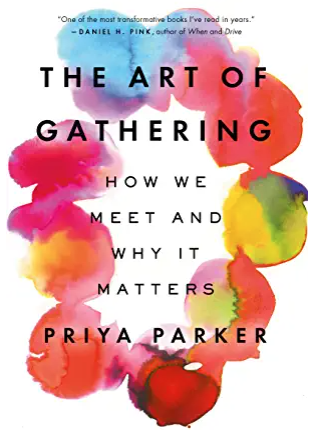
The Art of Gathering: How We Meet and Why It Matters
by Priya Parker
The Art of Gathering: How We Meet and Why It Matters
Priya Parker
Riverhead Books, 2018
I originally read Priya Parker’s “The Art of Gathering” in 2019. At the time I was working at a nonprofit where I often organized public events and spent a lot of time developing community partnerships. I read the book hoping to plan more compelling experiences, both for the general public and our internal team. The book delivered on both fronts and I have recommended it to others countless times.
In one of the most salient parts of the book, Parker posits that at their core, gatherings are opportunities for collective growth and healing, hindered by our inability to be vulnerable with each other. She writes “every time people gather, they are being brought into the opportunity to help one another, to do what they couldn’t do or think up or heal alone. And yet so often when we gather, we are gathered in ways that hide our need to help and portray us in the strongest and least heart-stirring light.”
While the topics covered in “The Art of Gathering” may not be particularly groundbreaking — the author stresses the importance of setting clear intentions, mitigating power dynamics, and aligning intentions with the more practical elements of time, place, and structure — the book’s appeal rests on its examination of the things we often overlook. How many of us actually put this much forethought into our meetings as opposed to simply doing them because we feel we have to? And what would our lives be like if we planned our gatherings with greater intention and vulnerability?
I thought a lot about “The Art of Gathering” this year in the context of return-to-work policy discussions. Nearly 22 months since the World Health Organization declared COVID-19 a pandemic, our collective fatigue is palpable; recently a viral TikTok video astutely warned “the pandemic isn’t over, just because you’re over it.” In our hunger for some semblance of normalcy, many of us are rushing back to outdated and ineffective practices. And while return-to-work discussions have focused on the logistics of the process, Parker’s book invites us to ask why we are meeting at all.
— Eric Mora
Enlarge
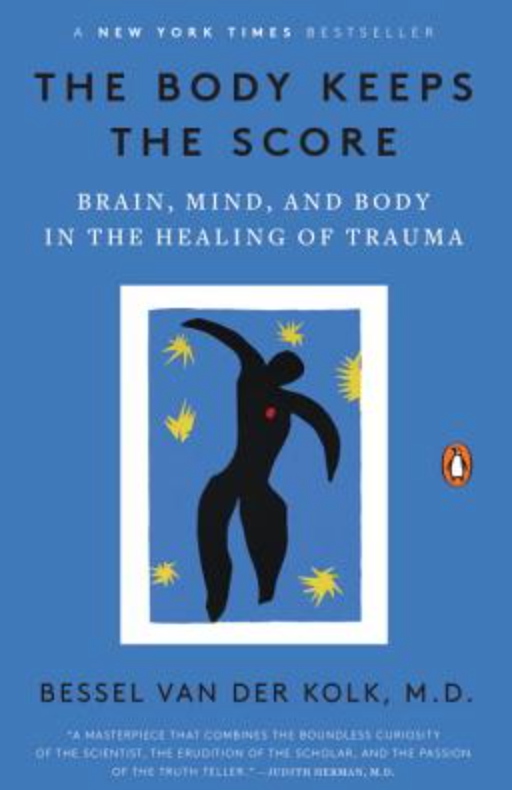
The Body Keeps the Score: Brain, Mind and Body in the Healing of Trauma by Bessel Van Der Kolk, M.D.
The Body Keeps the Score: Brain, Mind and Body in the Healing of Trauma
Bessel Van Der Kolk, M.D.
Penguin Publishing Group; Reprint edition 2015
I discovered “The Body Keeps the Score” early in 2021 and my life will never be the same. The author, Bessel Van Der Kolk, M.D., is a psychiatrist who has researched for years how trauma affects the body and the mind. His research has led him to conclude that we are undergoing a crisis in this country caused by people suffering from childhood trauma that eventually is diagnosed as mental disorders — bipolar disorder, borderline personality disorder, schizophrenia — many a result of traumas.
Whether the trauma, like sexual abuse and mistreatment, is inflicted during childhood or during adulthood — think of combat veterans who witnessed unspeakable terrors. These maladies would be better addressed by nurturing relationships and by better caring for the body, which keeps the score, through yoga, tai chi or other disciplines that promote healing movement.
The book is divided in five parts, including one about trauma in children and how neglect, abuse, and even bad parenting can lead to a lifetime of challenges. These types of issues start surfacing early on, on children who can’t sit still in the classroom, who can’t follow directions, who rebel against their teachers. Why would a child be compliant when his brain is telling him that there’s danger, that screams or yells or fists are lurking in the corner, that he better be ready to run for his life?
What’s remarkable about this book is that Dr. Van Der Kolk explains step by step how trauma affects the parasympathetic nervous system, the part of the brain that stores our memories and how it can’t forget them. Truly, the body keeps the score, refuses to forget, and events that happened seemingly a lifetime ago are lodged into those important cells of the body.
Whether those affected are 7, 15, 20 or 60, their bodies will continue to be triggered in a way that’s beyond their control. Unless they seek therapy and take active steps to disconnect the past from the present.
Without a doubt, this book has become one of the most significant of my life. It’s helping me better understand my children (I did not cause their traumas, thank you very much. For reals!) and the children I encounter in the community on a regular basis. The book should be required reading for every educator in the public school system in the United States.
— Claudia Meléndez Salinas
Enlarge
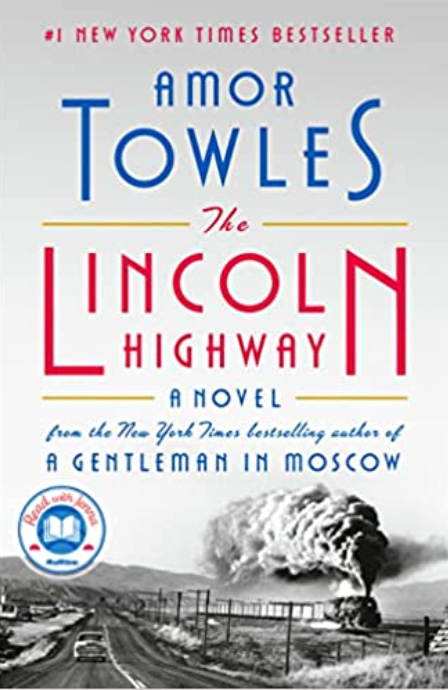
The Lincoln Highway
Amor Towles
Viking, 2021
Earlier this year, some dirty rat — a so-called friend who often boasts about his refined literary tastes — introduced me to a novel by Amor Towles called “A Gentleman in Moscow.” It was a long and rambly book set almost fully within the stifling confines of the Metropol Hotel. Nothing much happens, but it was one of the more spellbinding books I’ve read in years.
So now I’m one of the Amor Towles geeks who would read a pharmacy prescription if it were written in his hand. Towles’ prose employs subtle trickery, clever artifice and sublime whimsy to induce inappropriate laugh-at-loud moments on one page and irrepressible weep-worth moments the next.
His latest is “The Lincoln Highway,” a significant departure from “Gentleman.” Whereas “Gentleman” spans the lifetime of one lonely fellow’s life within the Metropol, “The Lincoln Highway” is an on-the-road buddy novel with a sprawling cast of weird but loveably perceptive knuckleheads, some of whom seem to have recently fallen face-first from the turnip truck. And each of them has something profound to say about life’s rich pageantry.
One of them, a railcar-hopping tramp named Ulysses, describes the secret of inner strength: “The Good Lord does not call you to your feet with hymns from the cherubim and Gabriel blowing his horn,” Ulysses says. “He calls you to your feet by making you feel alone and forgotten. For only when you have seen that you are truly forsaken will you embrace the fact that what happens next rests in your hands, and your hands alone.”
— Joe Livernois
Enlarge
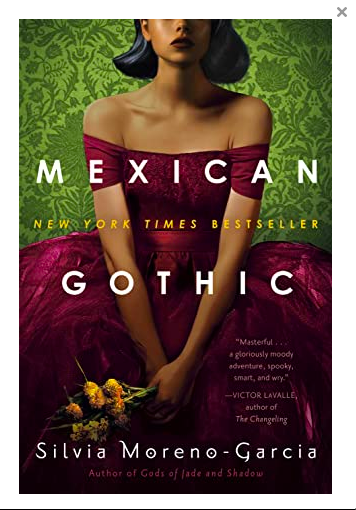
Mexican Gothic
Silvia Moreno-Garcia
Del Rey, 2020
I’ve been a fan of horror novels ever since I read Stephen King’s “Carrie” in high school, although I had not read any for many years until I discovered “Mexican Gothic.” It’s a slow burner of a story, but the payoff is impressive.
Silvia Moreno-Garcia likes to pair evocative historical periods with supernatural twists; in “Mexican Gothic,” the time is the glamorous 1950s; the setting is a mysterious house with terrifying secrets. The main character is Noemí Taboada, who receives a frantic letter from her cousin begging to save her from a mysterious doom, and heads to a distant mansion in the Mexican countryside to help.
Noemí, smart and tough despite her debutante appearance, recognizes that something is very wrong with her cousin, who recently married into a wealthy mining family, yet after Noemí arrives at High Place, the cousin insists that she’s fine. Glimpses of strange goings-on, dreams of blood and doom, and locked rooms only increase her suspicions. Her only ally is the family’s youngest son, who seems to know more than he’s saying.
The novel starts as a psychological thriller and then evolves into outright creepy horror laced with sinister experiments, colonialism and eugenics. The Guardian’s review describes “Mexican Gothic” as “Lovecraft meets the Brönte sisters in Latin America,” which nicely sums up the atmosphere that Moreno-Garcia summons in this tale.
Maybe this genre is not everyone’s cup of tea, but I thoroughly enjoyed my introduction to Moreno-Garcia’s writing and am looking forward to sampling some of her other recent work. Also: I’m super-excited that Hulu picked up “Mexican Gothic” and is developing it as a series.
— Kathryn McKenzie
Have something to say about this story? Send us a letter.